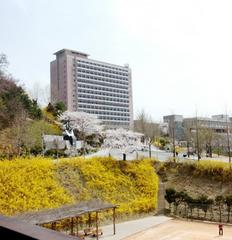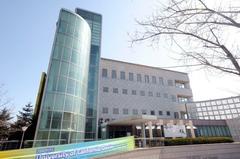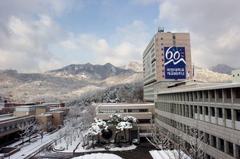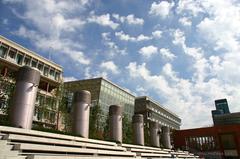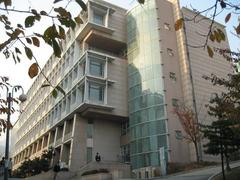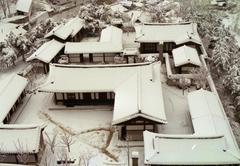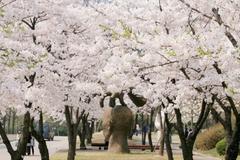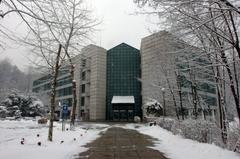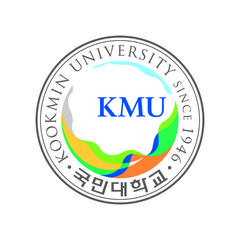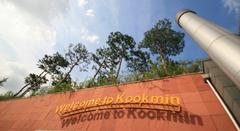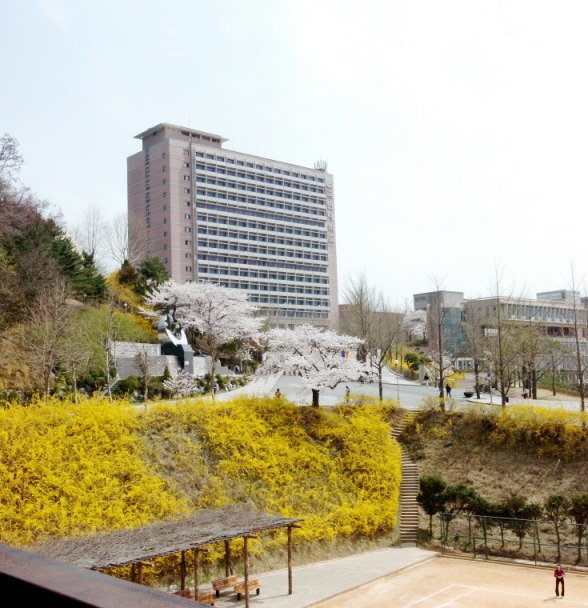
Kookmin University Visiting Guide: Seoul, South Korea – Tickets, Hours, and Attractions
Date: 14/06/2025
Introduction: Kookmin University’s Legacy and Significance
Set against the scenic backdrop of Bukhansan National Park in northern Seoul, Kookmin University (KMU) stands as a testament to Korea’s enduring pursuit of independence, cultural identity, and academic excellence. Established in 1946 by members of the Provisional Government of the Republic of Korea, including Haegong Shin Ik-hui, the university was founded at a pivotal moment in Korea’s modern history, shortly after liberation from Japanese colonial rule. Today, Kookmin University is not only a leading educational institution but also a vibrant cultural and historical destination, drawing visitors from around the world to its unique blend of tradition, innovation, and natural beauty.
This guide presents comprehensive information for planning your visit to Kookmin University. It covers visiting hours, ticketing, campus layout, major attractions, accessibility, guided tours, and nearby historical sites. Whether you’re a history buff, a prospective student, or simply curious about Korean culture and higher education, Kookmin University offers a multifaceted experience. For up-to-date details, consult official resources such as the Kookmin University Official Website, Seoul Tourism Official Site, and Bukhansan National Park.
Table of Contents
- Introduction
- Historical Background and Founding Principles
- Visiting Hours and Ticket Information
- Location and Accessibility
- Key Attractions and Cultural Highlights
- Campus Layout and Architectural Highlights
- Guided Tours and Special Events
- Student Life and Cultural Engagement
- Academic Environment and Internationalization
- Campus Facilities and Amenities
- Nearby Seoul Historical Sites
- Practical Tips for Visitors
- Frequently Asked Questions (FAQ)
- Visuals and Media
- Conclusion
Historical Background and Founding Principles
Kookmin University was founded in the spirit of Korea’s post-liberation drive for national reconstruction and educational advancement. The university’s four guiding principles—humanism, nationalism, culturalism, and industrialism—continue to shape its mission and identity (TopUniversities). This ethos is evident in both its curriculum and its campus culture, fostering innovation, inclusivity, and community engagement.
Visiting Hours and Ticket Information
- Campus Grounds: Open daily, typically from 8:00 AM to 8:00 PM.
- Kookmin University Monument: Accessible from 9:00 AM to 6:00 PM, free of charge.
- Myungwon Folk House & Myeongwon Museum: Usually open from 10:00 AM to 5:00 PM (Tuesday to Sunday), closed on Mondays and public holidays. Museum tickets cost approximately 3,000 KRW for adults, with discounts for students and seniors.
- Guided Tours: Available by appointment through the university’s visitor center. Some programs and workshops may require advance booking or a small fee.
Location and Accessibility
- Address: 77 Jeongneung-ro, Seongbuk-gu, Seoul, South Korea
- By Subway: Take Line 4 to Jeongneung Station, then transfer to local buses or walk to the campus.
- By Bus: Multiple bus lines connect the university to central Seoul and other districts.
- Accessibility: The campus is wheelchair accessible, with ramps and elevators in main buildings. Assistance is available at the visitor center (KMU English).
Key Attractions and Cultural Highlights
Kookmin University Monument
A symbol of the university’s foundation and Korea’s fight for independence, the monument features symbolic architectural elements. It is a popular spot for reflection, photography, and learning about the university’s role in Korean history.
Myungwon Folk House
Designated Seoul National Treasure No. 7, this traditional hanok allows visitors to experience Korean heritage through hands-on workshops, such as tea ceremonies and craft-making. The house’s surroundings are especially picturesque in spring and autumn (StudyAtUniversity).
Myeongwon Museum
Showcasing artifacts from the late Joseon period, the museum offers insights into Korea’s historical and artistic legacy. It also features special exhibitions and educational programs for visitors of all ages (official KMU site).
Campus Layout and Architectural Highlights
Kookmin University’s campus is renowned for its harmonious integration of modern and traditional architecture, set amid lush landscapes adjacent to Bukhansan National Park. Notable buildings include the Administration Hall, Bugak Hall, College of Engineering, Sungkok Library, and the Myungwon Folk House. The campus layout is designed to facilitate academic, cultural, and recreational activities, making it a pleasant environment for both study and leisure (StudyAtUniversity).
Guided Tours and Special Events
- Campus Tours: Led by university staff, these tours highlight KMU’s history, architecture, and key sites. Contact the visitor center for scheduling.
- Cultural Festivals: The annual Daedongje festival features K-pop performances, food stalls, traditional games, and cultural exhibitions. Most festivals are open to the public (EdArabia).
- Workshops at Myungwon Folk House: Participate in tea ceremonies, kimchi-making, and traditional crafts with advance registration.
Student Life and Cultural Engagement
Kookmin University boasts a vibrant student community with over 100 clubs and organizations, ranging from academic societies and volunteer groups to cultural and hobbyist clubs (StandYou). International students find a welcoming atmosphere, with numerous opportunities for cross-cultural exchange. The campus regularly hosts art exhibitions, concerts, and sports events.
Academic Environment and Internationalization
KMU is home to approximately 23,000 students, offering 14 undergraduate colleges and a wide selection of graduate programs (StudyAbroad KU). Many courses are taught in English, and the university maintains robust international exchange programs, welcoming hundreds of students each semester (JMU Exchange). Support services for international students include Korean language courses, orientation sessions, and visa assistance.
Campus Facilities and Amenities
- Accommodation: On-campus dormitories and nearby off-campus housing options cater to diverse needs and budgets (StudyAtUniversity).
- Dining: Multiple campus cafeterias, cafes, and snack bars serve Korean and international cuisine. The surrounding district offers additional restaurants and shops (StudyAbroad KU).
- Sports and Recreation: Facilities include sports fields, a gymnasium, and hiking trails leading directly to Bukhansan National Park (StandYou).
- Libraries and Study Spaces: The Sungkok Library provides extensive print and digital resources, with dedicated study lounges for group and individual work.
Nearby Seoul Historical Sites
Extend your visit by exploring nearby attractions:
- Bukhansan National Park: Famous for hiking and panoramic views.
- Seodaemun Prison History Hall: Museum chronicling Korea’s independence movement.
- Gyeongbokgung Palace: Iconic Joseon-era palace.
- Seongbuk-dong Cultural District: Traditional houses, art galleries, and cafes.
Most sites are accessible via public transportation from KMU.
Practical Tips for Visitors
- Best Time to Visit: Spring (cherry blossoms) and autumn (fall foliage) are especially scenic.
- Photography: Permitted outdoors and in most public areas. Check for restrictions inside museums.
- Language: English signage is common, but basic Korean phrases may be useful.
- Accessibility: Most campus areas are wheelchair accessible. Some historic hanoks may have limited access.
- Parking: Limited on-campus parking is available for a fee. Public transport is recommended.
- App Support: Download the Audiala app for interactive maps, audio guides, and real-time event updates.
Frequently Asked Questions (FAQ)
Q: Is there an entrance fee to visit the campus or monuments?
A: General admission is free. Some workshops, guided tours, or museum visits may require a small fee or advance booking.
Q: Are guided tours available in English?
A: Yes, tours in English can be arranged by prior reservation.
Q: Can international visitors join campus festivals?
A: Absolutely. Festivals like Daedongje are open to the public and welcome international guests.
Q: How do I reach the university via public transport?
A: Take Seoul Subway Line 4 to Jeongneung Station, then transfer to a local bus or walk to the campus entrance.
Q: Are there dining options on campus?
A: Yes, several cafeterias and cafes are available, along with numerous restaurants in the surrounding area.
Visuals and Media
For virtual tours and more images, visit the official university website.
Conclusion and Call to Action
Kookmin University is more than an academic institution—it is a cultural, historical, and natural gem in the heart of Seoul. Whether exploring the Kookmin University Monument, participating in a tea ceremony at the Myungwon Folk House, or enjoying a festival, KMU offers visitors a unique blend of tradition, innovation, and scenic beauty. Plan your visit today to immerse yourself in Korea’s educational and cultural heritage.
For the latest updates on visiting hours, events, and guided tours, consult the Kookmin University Official Website and follow their social media channels. Download the Audiala app for curated travel guides and insider tips to make the most of your Seoul adventure.
References and External Links
- Kookmin University Official Website
- Kookmin University NewsPlus: Myeongwon Museum
- StudyAtUniversity: Kookmin University in South Korea
- Seoul Tourism Official Site
- Bukhansan National Park Information
- StandYou: Study Abroad at Kookmin University
- JMU Exchange: Kookmin University
- EdArabia: Kookmin University, Seoul
